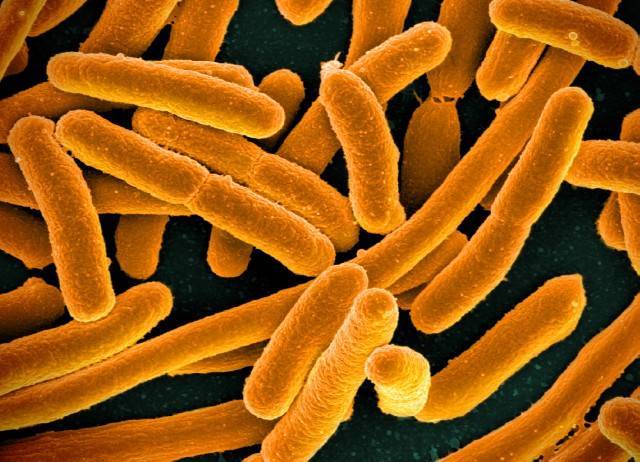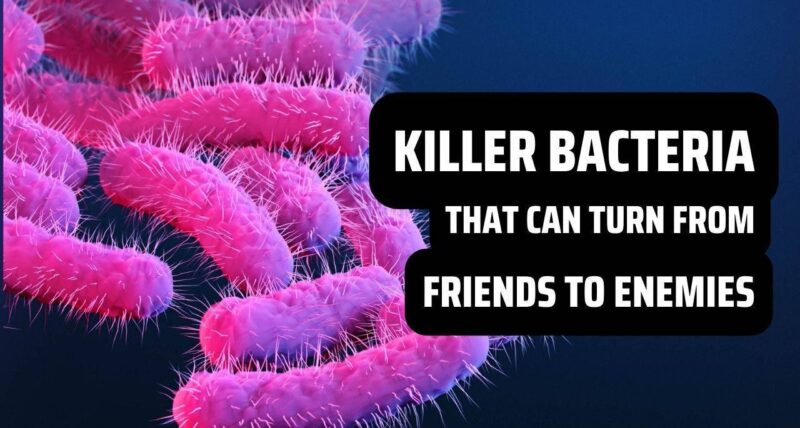The entire food chain works this way, with one feeding on the other. While the bacteriophages are well known, with viruses slaughtering the bacteria, the latter is not innocent. Scientists did come to terms with a type of killer bacteria that does keep tabs on the chemicals emitted by E. huxleyi and then attacks the same.

The situation is typical “frenemy” by nature, with the bacteria maintaining a friendly facade until it is powerful enough to slaughter the host, showing no mercy. This type of finding did help scientists assess the sudden demise of algal blooms without notice.
The phase of friendship – killer bacteria and phytoplankton
Photosynthesis in marine life is dominated by “phytoplankton” – algae with a single cell. Because of their importance in the marine world as a prime energy source, these algae indulge in significant biochemical processes. In this process, they interact with heterotrophic bacteria, allowing a chemical exchange.
This chemical exchange occurs in the phychosphere (a boundary of the algae cells with diffusive ability, also, molecules of high concentration do accumulate here). Now, the algae and the bacteria exchange growth formulation substrates coming to the main partnership. These include essential minerals, vitamins, and information-conveying molecules (info chemicals). Over time, the bacteria have developed a clever strategy for cell foraging, feeding on phytoplankton cells. Chemotaxis and motility are the prime content served on the menu. And these bacteria are capable of maintaining a close association with the algae.
Scientists have considered the Rhodobacteraceae family member for this purpose. They are quite efficient in capitalizing on interactions with the phytoplanktons. An organosulfur molecule known as dimethylsulfoniopropionate (DMSP) is the prime mediator for this purpose. It can initialize roseobacter – phytoplankton relationships, where the servings are sulfur and carbon.
In this friendly association, the algae do produce organic chemicals like amino acids, sugar, polyamines, and sulfonates, enabling bacterial growth. On the other hand, the Roseobacters do produce vitamin B and indole – 3 – acetic acid, stimulating growth.
The Study – killer bacteria and phytoplankton
Scientists went forward investigating the love and hate relationship between Roseobacter Sulfitobacter D7 and Emiliania huxleyi. Where the E.huxleyi does play an essential role in the biochemical cycling of sulfur and carbon.
In their previous studies, the scientists did notice the Sulfitobacter D7 undergo a lifestyle switch. Where they were seen to change their behaviors from co-existence to pathogenicity. On the other hand, the DMSP related to the algae, which is normally a friend to the bacteria, does evoke pathogenic tendencies with time.
The accumulation of materials (H3)
Strains of E.huxleyi were taken from the National Centre for Marine Algae and cultured in seawater (filtered). The specimens were incubated for 16:8 hrs and at a temperature of 18 degrees Celsius. Light-dark illumination cycles were maintained.
Further, the algae cultures were soaked in antibiotics to keep them axenic. Before making them interact with bacteria, the cultures were treated three consecutive times, making sure there were no antibiotics. A routine checkup technique, flow cytometry, was used to check the algae against bacterial infiltrations. The E.huxleyi were at their early form of exponential growth.
Method
The researchers did proceed forward with harvesting bacterial growth within various CM treatments. They also did perform RNAseq analysis of the same, using a specific protocol that is modified as well. Here is a list of the things that they aimed to identify:
- They wanted to identify genes related to pathogenicity by comparing various expressions of Sulfitobacter D7. They did induce pathogenicity intriguing profiles when the bacteria is actually in the state of co-existence.
- They did try to find the bacterial genes that are particularly responsive to DMSP and can not be specifically controlled by external factors (algae controlled).
They did grow Sulfitobacter D7 within a defined minimal medium without algae metabolites. They did supplement the same with 100uM DMSP and went forward to culturing its transcriptional response.
Results
The primary level of interaction between E.huxleyi and Sulfitobacter D7 had two distinct stages.
- The algae and the bacteria were in a coexisting relationship.
- Now, the rise in concentration levels of algal DMSP did invoke Sulfitobacter D7’s pathogenic nature towards E.huxlyei. This happens in two distinct phases,
- When the alga has reached its stationary phase and
- When the DMSP gets introduced exogenously.
The scientists here have guided the growth of Sulfitobacter D7 within a conditioned media (CM) with the DMSP levels low and high. They did also name E.huxleyi in different phases. Where.
- Exp-CM stands as the co-existing phase.
- Stat-CM stands for the pathogenic phase.
- An additional pathogenic phase was introduced. Where they did supplement the Exp-CM with 100 uM DMSP. The setup did symbolize conditions like co-cultures, and the DMSP was added externally, invoking the pathogenicity levels of the Sulfitobacter D7. As a result, there was a mass death of the E.huxleyi.
The concentration levels of DMSP in natural water found in the sea are quite low than what one gets to discover in the phycosphere. Further, the same levels, when measured in the E.huxleyi cultures at their axenic stage the levels do rise to 70 uM. Therefore, the 100uM used in the study is relevant to the experiment.
Interesting facts about algae bacteria existence
Now that you are well accustomed to the love-and-hate relationship between the algae and bacteria strain let’s move forward to learning some interesting facts about both:
- Bacteria and algae have been co-existing since the early stages of human evolution.
- They both, in particular, do influence the ecosystem in variable ways.
- Studies so far did indicate algae and bacteria synergistically affect each other’s metabolism and physiology.
- The bacteria that do associate with green algae are known by the name of PGPB (Plant Growth Promoting Bacteria)
- Studies showcase that bacteroidetes and proteobacteria are more likely to associate with green algae than other forms of bacterial phylotypes.
- By coevolving all this while, bacteria, and algae have now gotten into defining specific habitats.
As evident from the writeup and various studies by researchers, bacteria, and algae do co-exist, and that is done with proper harmony. However, as time evolves and the algae start to get old or there comes a static phase, the killer bacteria goes pathogenic, marking an end to the algae host all by itself.



